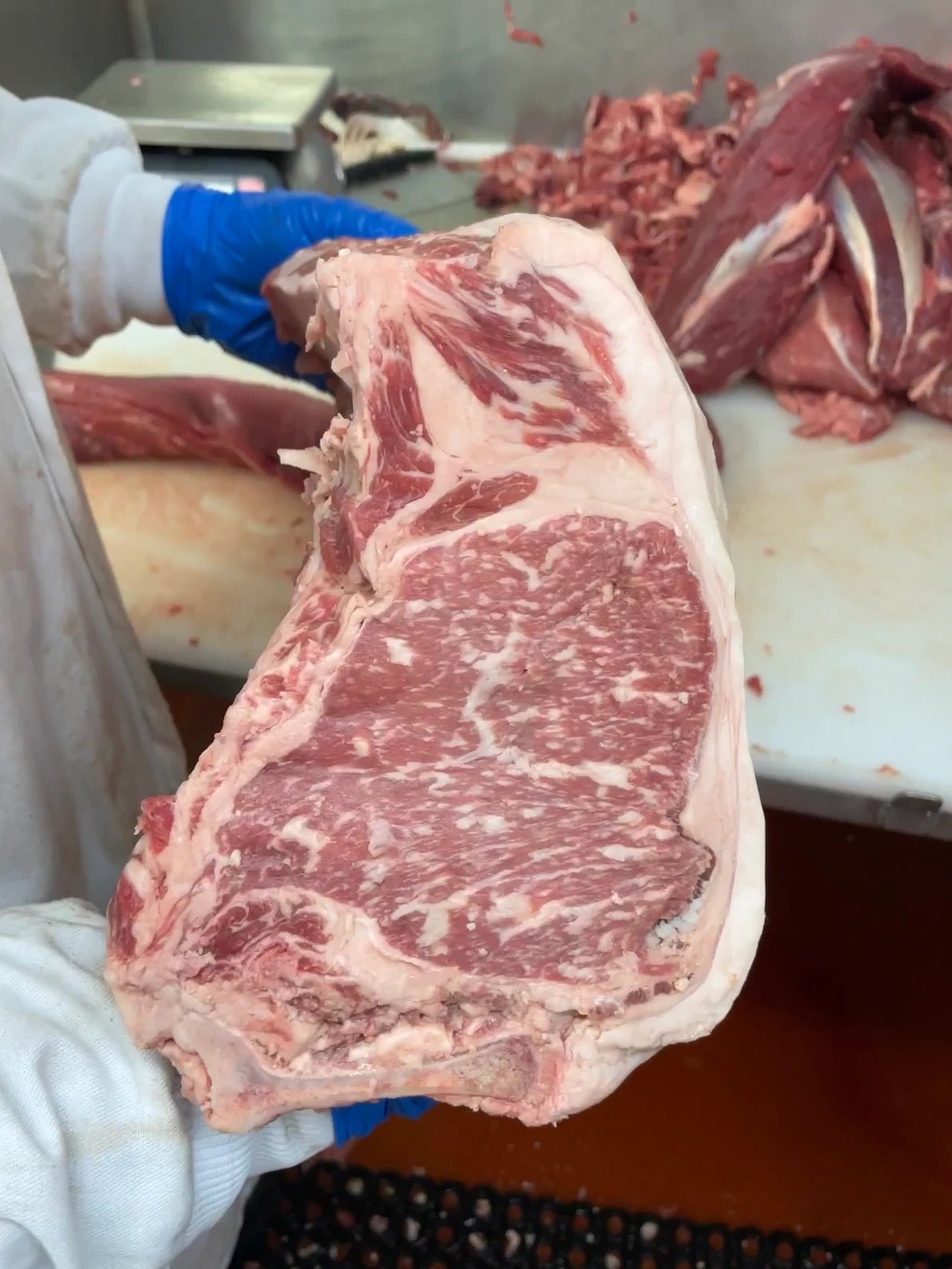back
NICK SOLARES CORNER
#3 - ADVENTURES IN DRY AGING: STOCKING THE DRYAGER DEVICE


For my first foray into dry aging at home using the DRYAGER UX500 I opted to follow the recommend settings: 82% humidity, 36°F. UV system on. I must admit my first instinct was to leave the UV light off, and stuff the unit with aged fat from an established dry aging room so as to to inoculate the DRYAGER with mold spores and accelerate the maturing process. Professional facilities boast stable climatic environments allowing them to consistently develop distinct aromas and flavor profiles to the beef they produce. As meat is moved in and out, on an often daily basis, the essence of the room is transferred from batch to batch. Continuity is important in this situation.
The DRYAGER offer slightly different vision, and rightly so as it is intended for a domestic environment, not one that is managed by professional butchers and regulated by United Stated Department of Agriculture (USDA) inspectors. DRYAGER comes not only with the UV light intended to retard bacterial growth on the exterior of the beef, but the walls inside the unit have a antimicrobial coating. The company recommends thoroughly cleaning the unit between aging batches of meat. This effectively resets the internal environment to a base neutrality each time.
As I have discussed at length there is no one right way to dry age beef anymore than there is a single way to produce wine. They are expressions of the art and craft of the butcher and the vintner. One only needs to observe the wide variety of successful dry aging rooms to understand that there is more than one way to achieve maturation. Rooms can be lined with wood, the meat hung on hooks, and the floor littered with saw dust, or they can ultra modern, resembling an operating theater with stark white lighting, the beef set on stainless steel shelves, lined up like soldiers. What they share in common is that they are cold, humid, and most often very blustery.
The DRYAGER design offers what I suspect will be stable, repeatable experience by virtue of its tight controls on not only the environmental parameters, but also the aforementioned bacterial controls. I wanted to see what the DRYAGER was capable of using completely fresh beef. This meant using meat cut from hanging cattle, rather than using boxed beef. Hanging cattle is the way that all beef was once brought to market. Split carcasses where shipped to local destinations and broken down there. These days an overwhelming percentage of beef is shipped as vacuum sealed Primals. This action effectively begins the aging process, and indeed if the meat is left in this state for 14 days it will be ready to eat. This is called wet aging.Most dry aged beef on the market today has spent sometime under vacuum seal before it arrived at the dry aging facility. A short loin arriving on the East Coast of America from a midwestern ranch might have been in the bag for as long as a week. There are butchers who are adamant that there is a difference between using fresh cut hanging beef and boxed beef. They claim that the vacuuming process draws out moisture which changes the properties of the meat. While the idea makes sense notionally I have had absolutely delicious dry aged meat from both boxed and hanging beef. Now that I have my own DRYAGER I will do a direct comparison.


For my first age I sourced a Prime grade strip loin, cut from hanging beef from Golden Packing, one of the few butchers left in Manhattan’s meat packing district. They are also one of the few that has access to fresh hanging beef anywhere in the Tri-State area, something that is hard to source in comparison to boxed beef. I opted for a strip loin, rather than a full short loin or rib because I wanted the simplicity of a NY strip, and I was also worried about fitting it in the DRYAGER as I wanted to use the shelf, rather than hanging on a hook, simply because that seems to be the preferred method in the numerous professional dry age rooms I have visited.
My strip loin weighed in at 23.4lbs, the meat felt firm, the fat was a pure white and the muscle was a pale pink. It was fabricated and hour before my arrival at Golden Packing facility and I placed it in my DRYAGER forty minutes after I picked it up. This is about as fresh as beef can get in a city. I put the strip loin on the shelf in the middle of the UX500 shut the door, took a photo, and headed to Nashville for a few days.

Unfortunately in my jubilance to start aging my own beef I didn’t quite follow the instructions from DRYAGER HQ. I sent them a photo while on the road and they advised that the meat might be a little close to the sides of the cabinet and recommended hanging the strip loin from a hook. A space of 2” is recommended around the meat to avoid possible icing issues. As it turned out I didn’t experience this, but followed the instructions and promptly hung the beef from a hook as soon as I got home. I have top say, it looks a lot cooler hanging on the hook.
Stay tuned, next time we look at how the DRYAGER faired after 28 days.

BRING YOUR DRYAGER™ UNIT TO YOUR HOME AND JOIN OUR FAMILY
As soon as you have received your DRYAGER™ device you can register to myDRYAGER and get exclusive access to more video tutorials, know how articles and much more.
back
